Hi. Congratulations on making it to another Tuesday — this feels like no small feat right now, and I’m grateful you’re here.
I’ve met some awfully cool people via Substack lately. (As a person who has never been cool a day in her life, that’s a blessing, and I’ll never cease being amazed at the good things the internet can bring.) One of those people is Jessica Wilen. Jessica is an Assistant Professor at the Yale Child Study Center, an executive coach and organizational development consultant focused on the unique needs of working parents, the mom of two young kids, and the creator of an excellent newsletter, A Cup of Ambition. (If you are a working mother, know a working mother, or care about working mothers, this is the newsletter for you.)
Jessica interviewed me a couple of weeks ago, if you’re inclined to read more about me and how I manage to write this thing while also being employed full-time outside my home and, you know, parenting:
Since that interview, Jessica also published an emotional and powerful post about the unique exhaustion of healthcare moms. If you’re not up to reading more about the negative consequences of the pandemic, I get it, but if you can, I highly recommend it.
If you’re just here for some book reviews, fabulous — here we go.
Families Like Mine by Marie-Therese Miller (2021)
I’ll happily admit that I tend to shy away from books that are overly didactic or were published to be used as teaching tools — but I also have to be honest in saying that they can be helpful, especially for toddlers and preschoolers (and, let’s face it, some bigger kids too) struggling with social-emotional learning, or kids who have learning differences of any kind. (As the parent of a child with some sensory processing issues, there is an entire section of our home library dedicated to identifying and handling one’s own emotions, so I’m NOT dogging on these types of books — merely saying that they have a pretty specific purpose in certain phases of development, seasons of life, and other special circumstances, even if they’re not my first choice.)
Some are quite well done, though, and Families Like Mine — along with the other titles in the “Like Mine” series, Feelings Like Mine, Homes Likes Mine, and Parents Like Mine — is among them. The text is extremely straightforward, almost a social story, which makes it excellent for the 1-3yo crowd, and there is zero ambiguity: “Some children are born into families. Other kids are adopted or fostered by families. Families may have a mom and a dad. They might have one mom or one dad. Some families have two moms or two dads.” Etcetera.
All of the images are stock photos and represent a range of diversity in skin tone (though a lack of diversity other visually identifiable ways, like disability or religious dress, which would have made this better all-around), and little littles will enjoy looking at all the different faces and loving situations presented here. (It would be fun to follow repeated readings of this book by creating a “Family Like Mine” book of one’s own, printing out photos of your immediate and extended family, especially if you’re separated by distance, and gluing them into a blank book.)
This isn’t a perfect title, but it’s one of the better ones in an important genre, and it’s worth checking out.
(If you like these types of books, I recommend anything by Shelley Rotner. If you like books about families in particular, see my Bookshop.org booklist of the same title — I receive a small commission if you make a purchase using that link.)
Be a Maker by Katey Howes, illustrated by Elizabet Vuković (2019)
This book begins with an inviting premise:
Ask yourself this question in the morning when you wake: in a world of possibilities, today, what will you make?
What follows is a cascade of potential ideas: making a tower, a drum, a telescope, a blueprint, a spaceship, a map. The suggestions are creative, full of sensory details (“Make a rhythm — drum and pound. Ears make out another sound”) and lots of charm (“Make a gift of what you’ve made. Make a smile from lemonade.”)
Vuković’s bright and playful watercolor, gouache, colored pencil, and Photoshopped illustrations are the perfect match for this romping, rhyming adventure of a day that will get the wheels in childrens’ heads turning (if not the wheels in the heads of the grownups reading this to them).
Ask yourself this question as the sun begins to fade: in a day of making choices, are you proud of what you made?
It’s a question worth asking.
(Interested in more books like this? Don’t miss my Spotlight On: Makers and Making.)
Too Small Tola by Atinuke, illustrated by Onyinye Iwu (2020)
If you’ve been here for awhile, you’re know how much my family and I love Atinuke — I will buy anything she writes, sight unseen, which is precisely what I did last year when I pre-ordered Too Small Tola (just the fact that I pre-ordered a book says something). I was hoping, just the tiniest bit, for another Anna Hibiscus (Atinuke’s most famous and beloved character), and I wasn’t disappointed insofar as Tola is very much her own, lovable person, and I’m glad.
This episodic chapter book comprises three short stories about tiny Tola, her bossy Grandmommy, her supersmart sister Moji, and her fast, football-obsessed brother, Dapo, and the things that happen them in their life together in Lagos, Nigeria. These tales, told with all the freshness and honesty of a small girl in a huge city, are full of heart and humor — whether it’s enduring a marathon of errands with Grandmommy, bringing water from the pump when the faucets in the apartment break, watching an elder stand up to a bully, or helping out a friend in need (Mr. Abdul, the tailor, who suffers an accident and can no longer take his customers’ measurements relies on Tola to do the work he can’t, which keeps his business running), Tola proves again and again that she may be small, but she’s mighty — and it makes for a mighty fine, delightful read.
Just So Stories by Rudyard Kipling, illustrated by Safaya Salter (originally published in 1902; reprinted 1987)
I looked long and hard for a version of Kipling’s famous Just So Stories that satisfied me in a variety of ways — I didn’t want a standalone title (that is, I didn’t want a picture book of one Just So story), and I didn’t want a version that changed the original language.
The search took years, but when I finally stumbled upon this one at a library sale, it was worth the wait: all 12 of Kipling’s classic pourquoi tales are here in their entirety, preserved in their original form (which children can follow much more easily than you might think). The best part of this book, though, is Salter’s rich illustrations, sprinkled every few pages throughout (though not on each page). The detailed, jewel-toned images assert her experience as a textile designer and painter — each one looks as lush and majestic as a tapestry hanging on a castle wall.
If you worry that a book written in 1902 won’t appeal, I encourage you to give this one a try: Kipling’s cadence is essentially unmatched in children’s literature, and these humorous stories, each a blend of truth and fantasy, have a strange magic to them that seems to captivate readers both big and small.
Moonbeam: A Book of Meditations for Children by Maureen Garth (1992)
I’m not looking to extend bedtime — it already takes an hour as it is — but I am always looking for ways to send my children peacefully to sleep, and I’ve tried everything. Different things have worked at different ages and stages (for more on our reading routines, see my February 2021 issue of (How) Can we read?, and be on the lookout for an updated version of that post coming in the next few months), one of which has been meditations.
(A few weeks ago I read The Addiction Inoculation: Raising Healthy Kids in a Culture of Dependence by Jessica Lahey and was surprised to discover that meditation is a tool for preventing addiction — making it even more important to me than it was already.)
There are, of course, many ways to foster mindfulness in your children and it’s a worthy pursuit. My kids and I have meditated together on and off for years, sometimes with an app, sometimes with a meditation cd, but this is not either of those things — this is, instead, a kind of meditation read-aloud, where you are the voice of calm, reading out short, sweet, soothing scenarios that may help your small beloveds drift off to dreamland (well, if you’re lucky).
I like Garth’s offering here for a couple of reasons: first, she tells you exactly what to do, setting you up with a series of images to share with children to open bedtime meditation time (a star to focus on, a garden to enter, a Worry Tree to drop off any worries they may have), before beginning with a new little story. Second, the stories themselves are short — most don’t exceed two pages, so even when you’re reading them at a nice, slow, meditative pace, they still only last a few minutes. Third, they are calming in all the ways one might expect — there is nothing exciting happening here, just purely comforting narratives (like bobbing up and down in the ocean as you meet an octopus, hopping on lily pads in a pond with a friendly frog, going flying with a Star Fairy). This all sounds simple, and it is — but for anyone who has ever parented a child with anxiety, or one who feels anxious at bedtime for any reason, simple is great. Simple is perfect. Simple works.
Am I going to tell you that Garth has uncovered some sort of magic formula for getting children to sleep? No. This isn’t a jug of melatonin you’re topping off their goblets with — but it is a useful, gentle counterpart to the other things you may be doing at bedtime.
I don’t know about you, but I’ll take all the help I can get.
(If you like this one and want more of its kind, Garth has other books of meditations for children — Starbright, Earthlight, and The Inner Garden. You might also enjoy Sweet Dreams for Little Ones: Bedtime Fantasies to Build Self-Esteem by Michael G. Pappas, which I reviewed in issue No. 34.)
That’s all for today, but before I sign off:
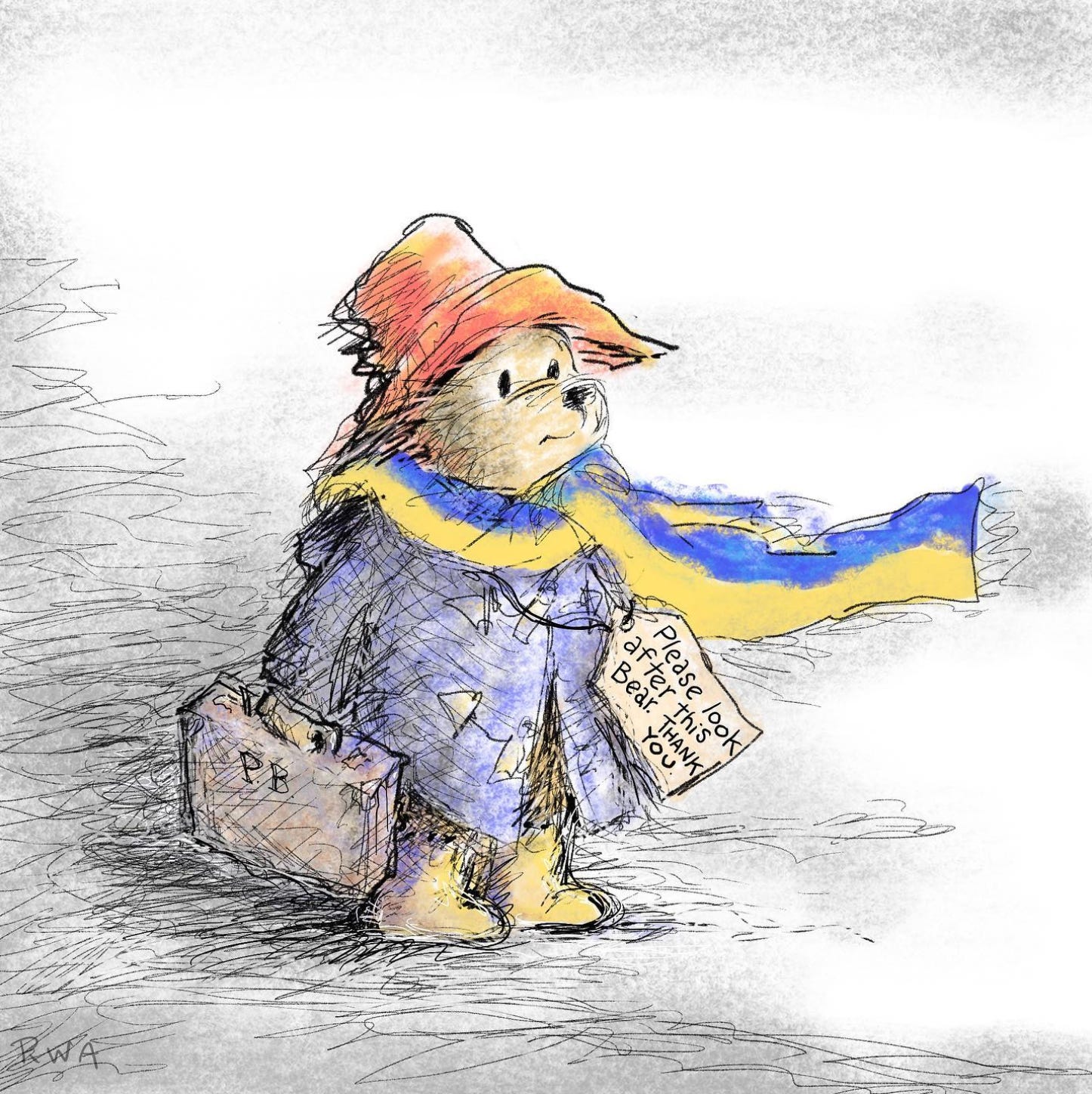
If you’re looking for book-related ways to help out Ukrainian families and children, you might be interested in Packed with Hope — an initiative set up by two independent British publishers to fill 10,000 backpacks with a selection of items that are both comforting and essential, starting with books and expanding into head lamps, notepads, colored pencils, toothbrushes, puzzles, playing cards, activity books, bags of marbles, hot water bottles, socks, hats and scarfs, reusable drinking bottles, and many other much-needed things. (Thanks to Anna at Well Read with Anna Bonet for sharing info about this campaign with her own newsletter subscribers, which is how I learned about it.)
Take care of yourselves and each other. Thanks for reading.
Sarah

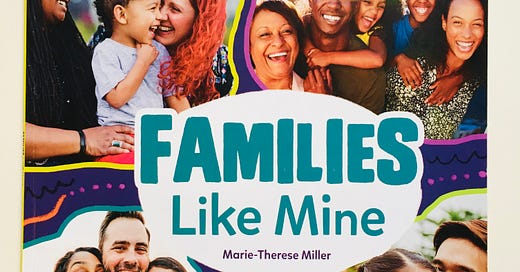




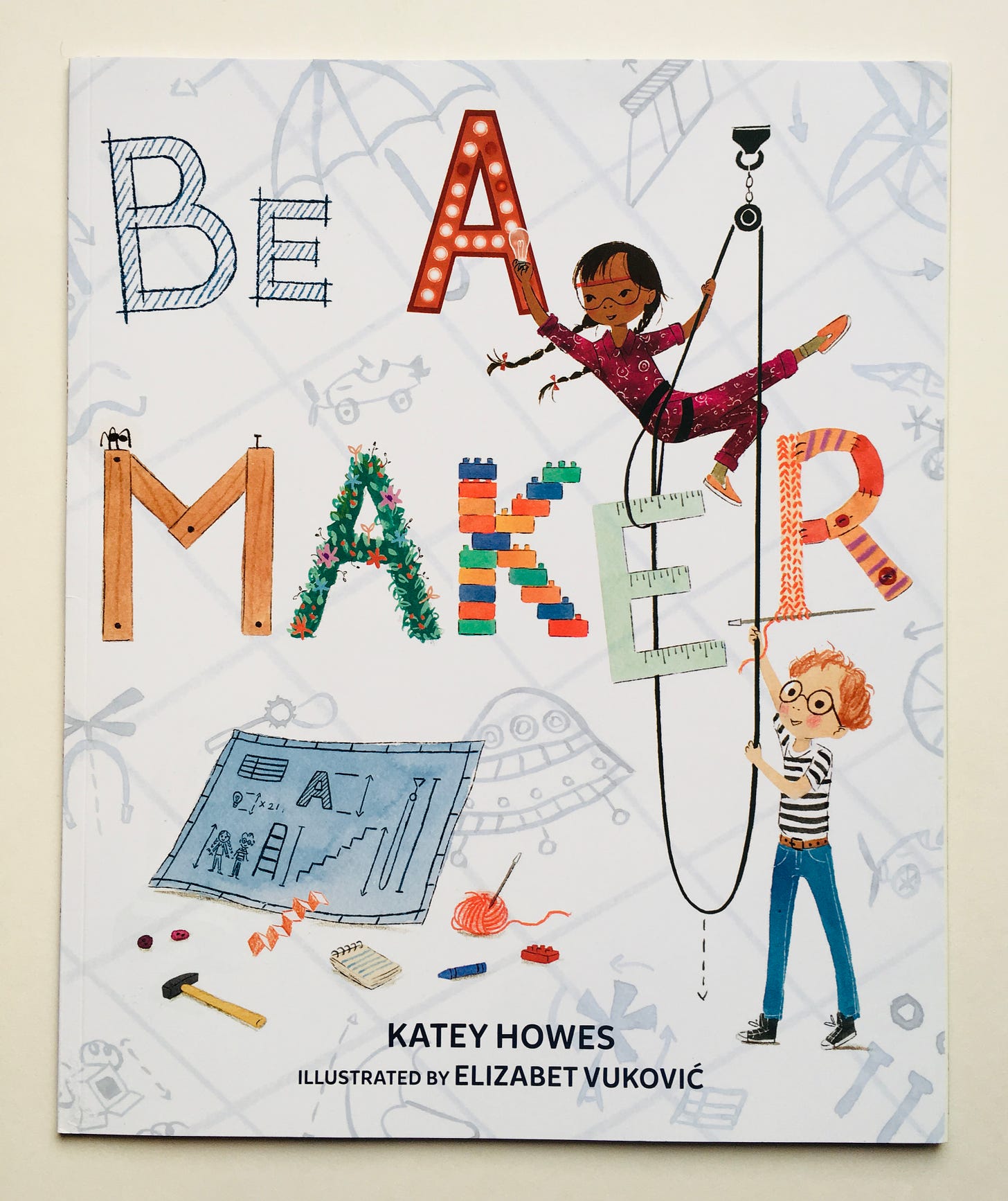
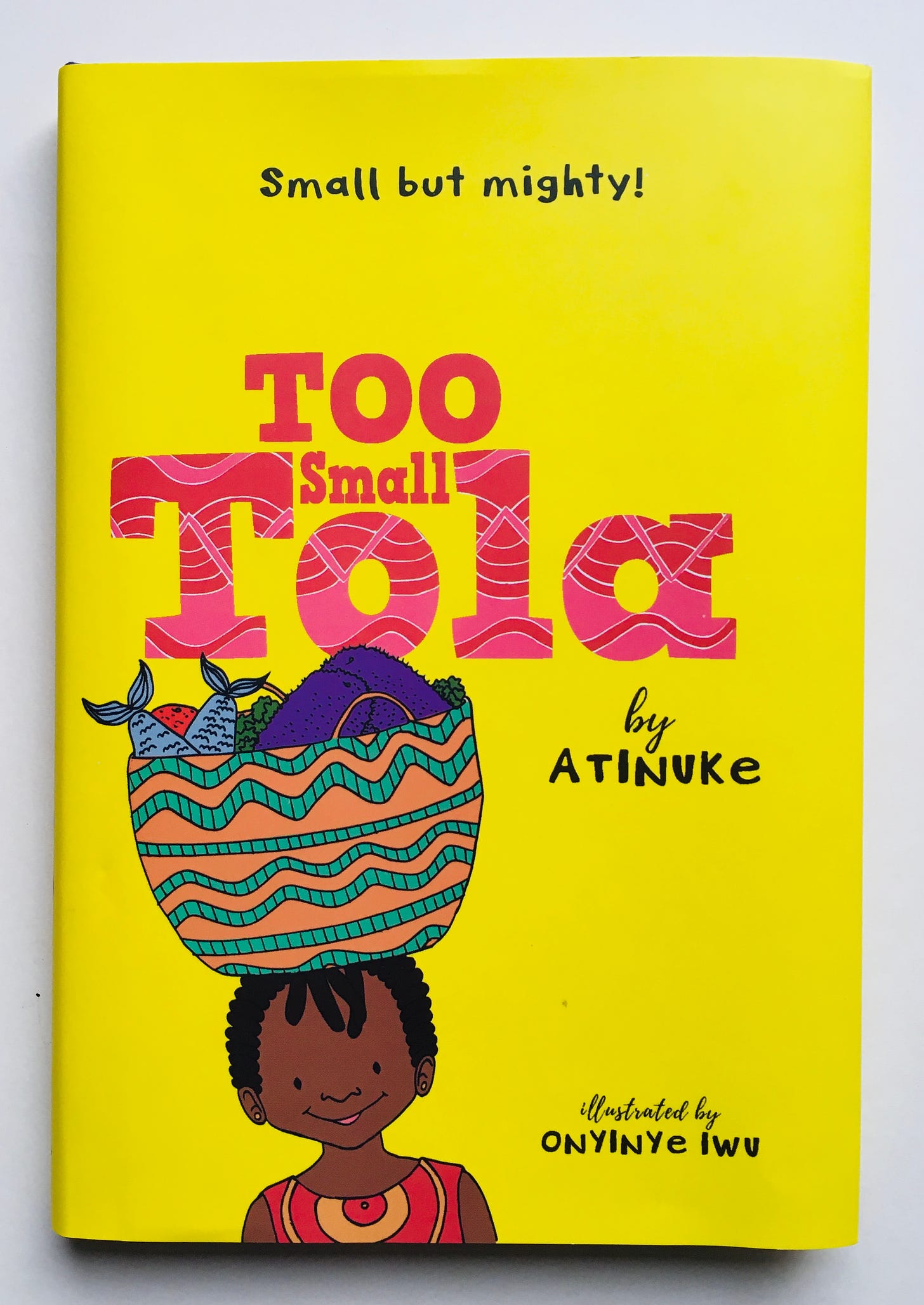
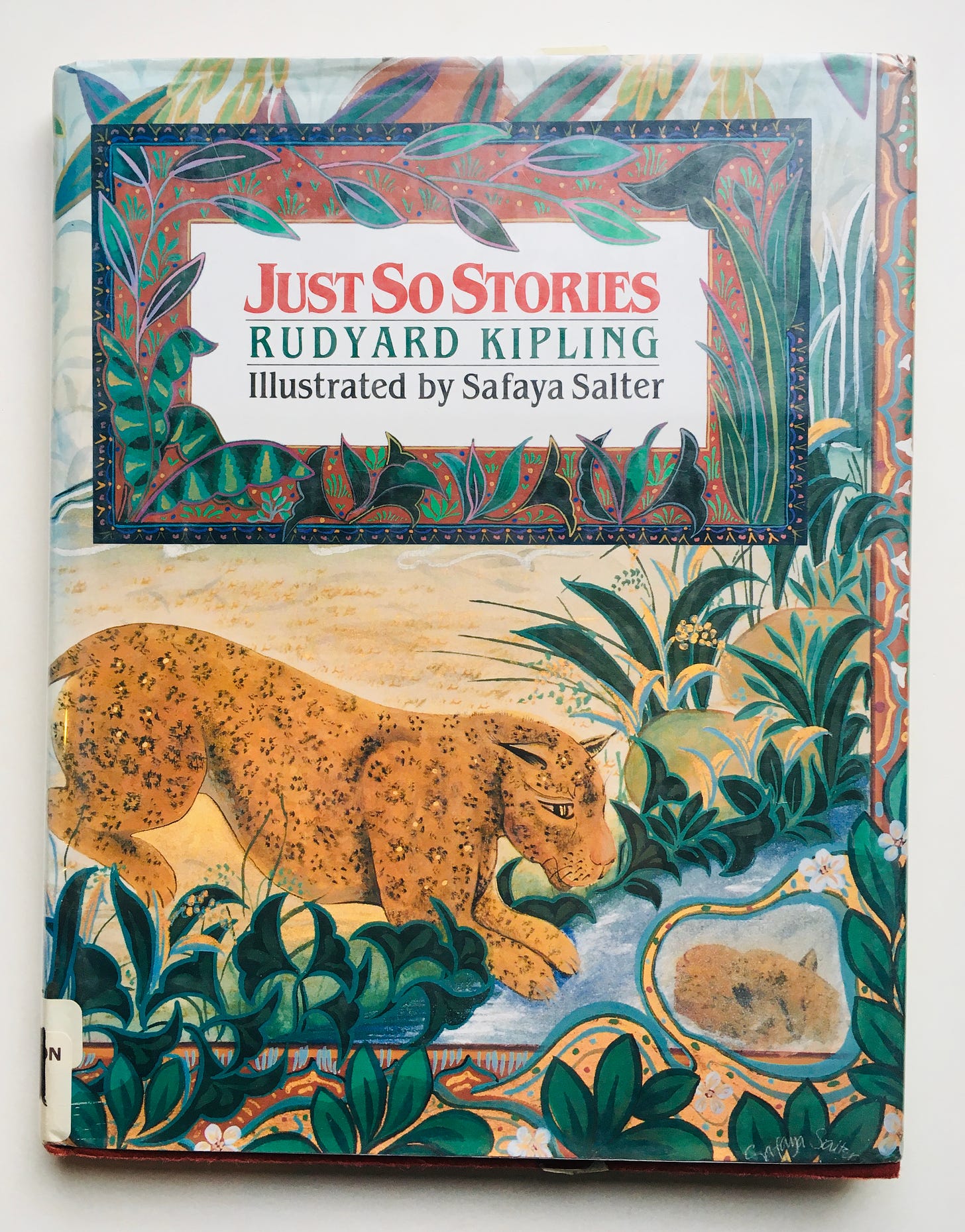
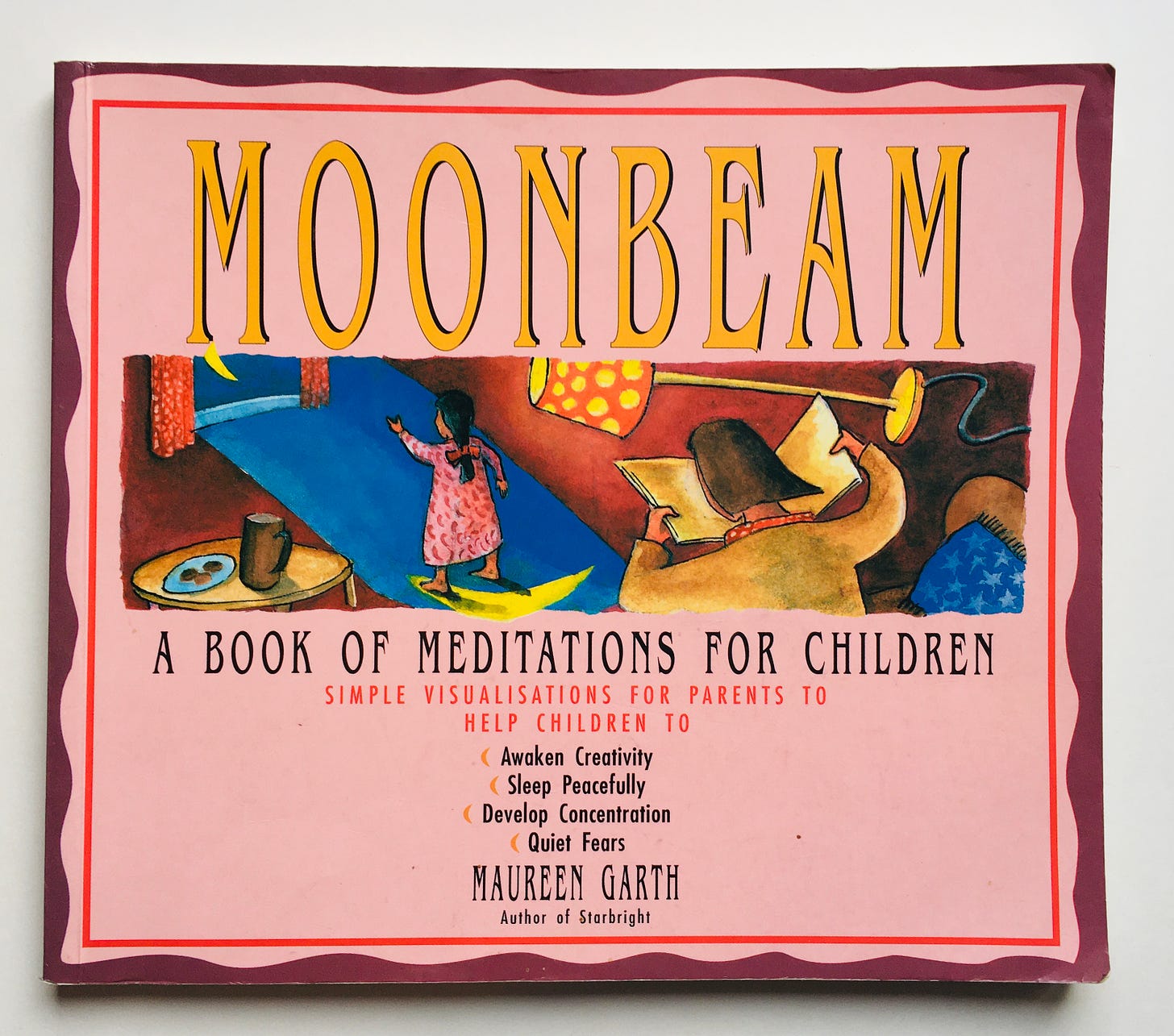
Paddington in a Ukraine scarf! Oh, my stars. 🥺 Thanks for this post, for your truly diverse range of recommends, and for ending with this lovely initiative.
Love this! And I'm super interested in that Moonbeam book (and her others.) I need all the help I can get at bedtime, too.
And I'm so glad you finally found a collection of Just So Stories that you were looking for! Library sales are awesome.